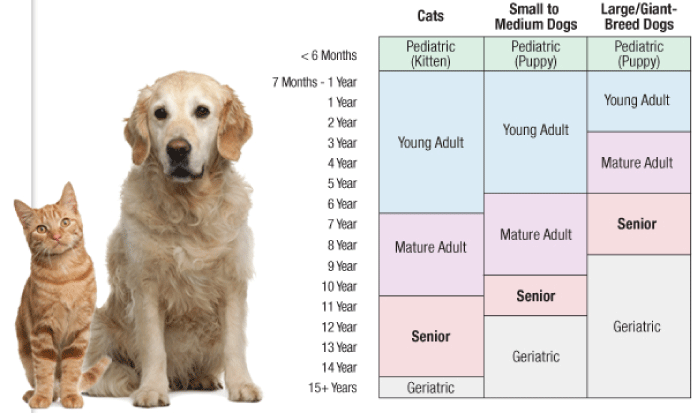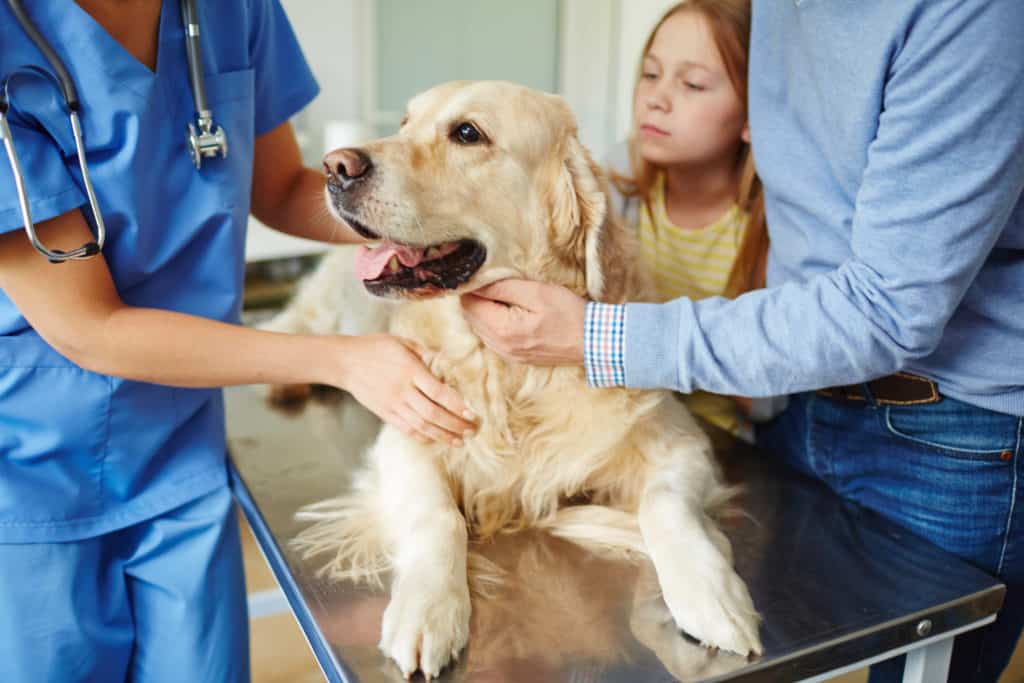6 Common Questions About Aging Pets Answered
It is an unfortunate truth that our pets’ age faster than we do, but not all pets age at the same rate.
Small breed dogs and cats tend to outlive their giant breed counterparts. Example: a 10-year-old Chihuahua would be a different human age equivalent than, say a 10-year-old Great Dane. Using that example, the Chihuahua might be an equivalent of roughly 55 years, while the Great Dane would be closer to 80 human years!

Pets sometimes require additional attention as they age, so we answered a few common questions:
1. Does 1 year of a dogs life equal 7 human years?
Contrary to popular belief, dogs do not age at a rate of 7 years for each year in dog years. Cats and small dogs are generally considered “senior” at seven years and have plenty of life in them at that age. It’s one of the common pet myths like we mentioned on a previous blog posted last July.
2. When is my dog considered a senior?
The “senior” classification is based on the fact that pets age faster than people, and veterinarians start to see more age-related problems in these pets. Larger dog breeds tend to have shorter life spans compared to smaller breeds and often considered a senior when they reach 5-6 years of age. It’s easy to spot the signs of aging pet such as graying coat and having a slower pace, but it’s important to remember that pet’s organ systems are changing as they grow older.
3. What ailments can my pet get?
Order pets are likely to develop heart, liver and kidney disease, cancer or arthritis. Dogs can get cancer at roughly the same rate as humans, while cats have a somewhat lower rate and cancer accounts for almost half of deaths of pets over 10 years of age. If your pet starts avoiding active play, running or having trouble with daily activities and jumping up on favorite chair or family car, it may have arthritis.
4. How do I know when something s wrong?
Behavior changes in your pet can serve as the first indicator of aging or problem, like discomfort, pain or worsening sight or hearing. Pets with arthritis may also show irritation with touch, especially over sensitive areas and depression. There may be other reasons for changes and your pet need to be examined by a veterinarian to determine the cause of the problem.
5. Pet Blindness
It’s normal for pets to lose some of their sight and hearing as they age and older pets may develop cataracts. Pets with poor sight or blindness can get around well in a familiar environment. If your pets’ eyesight is failing avoid rearranging, adding furniture or other items that can be an obstacle.
6. Weight Gain
Weight can have a tremendous effect on older pets heath. Obesity in pets is growing and this increases the risk or arthritis, cancer, difficulty breathing, diabetes, heart disease, high blood pressure, skin problems and many other heath conditions. Sudden weight loss in older pets is also a concern, especially for cats. Hyperthyroidism, diabetes and kidney disease are the common causes of weight loss in senior cats. If you notice any sudden weight changes in your older pets, contact your veterinarian.
Senior pets are most likely to develop age-related problems, and they should be regularly examined by a veterinarian to keep them healthy. Detecting problems early before they become difficult to treat is key for your pets and pocketbook. Keep your pets on preventive care, active, healthy diet, spay and neuter your pets!










I really liked this article. To show different points of view which had very compelling points. Thank you